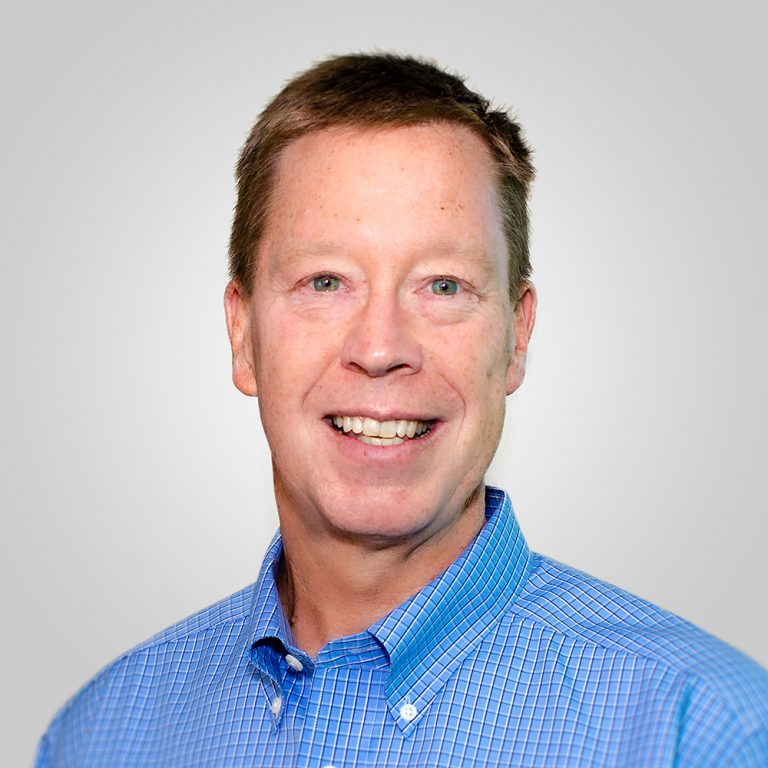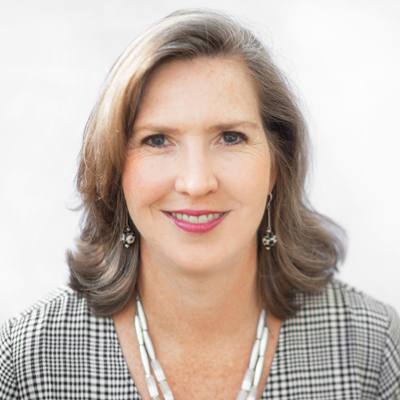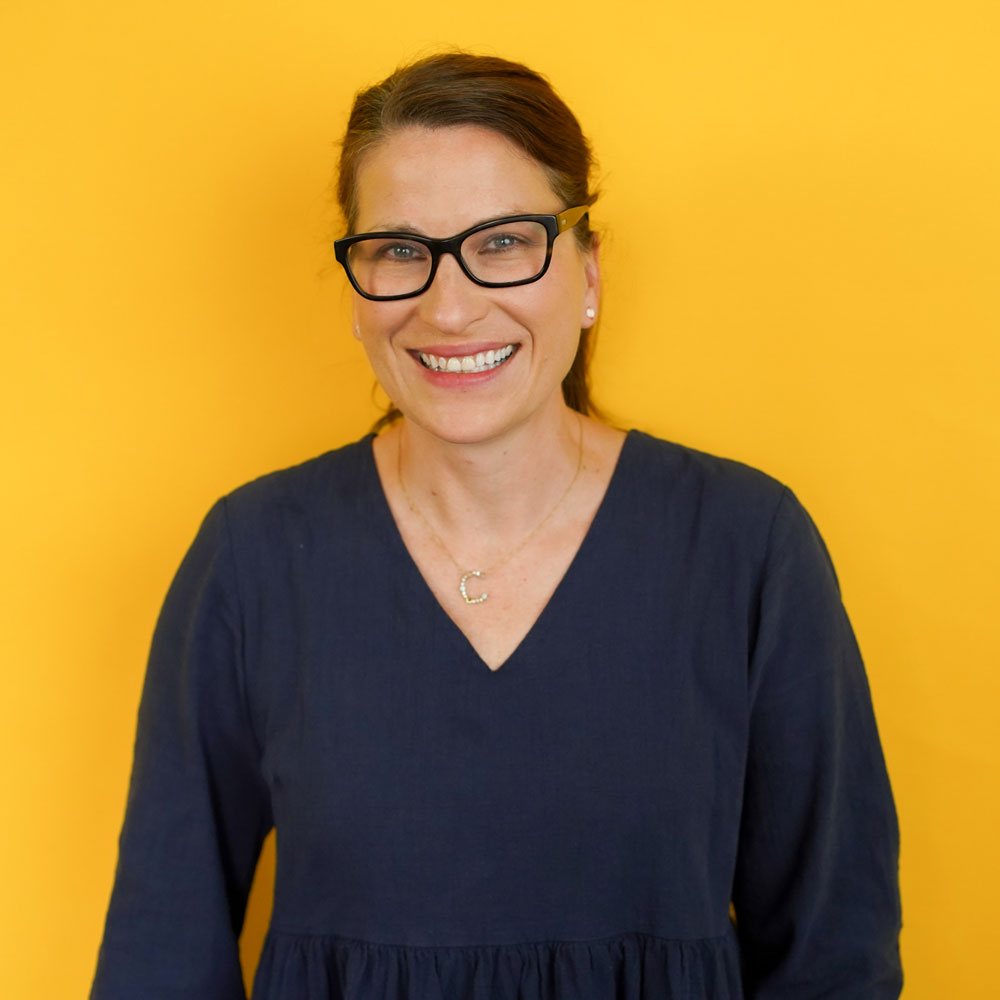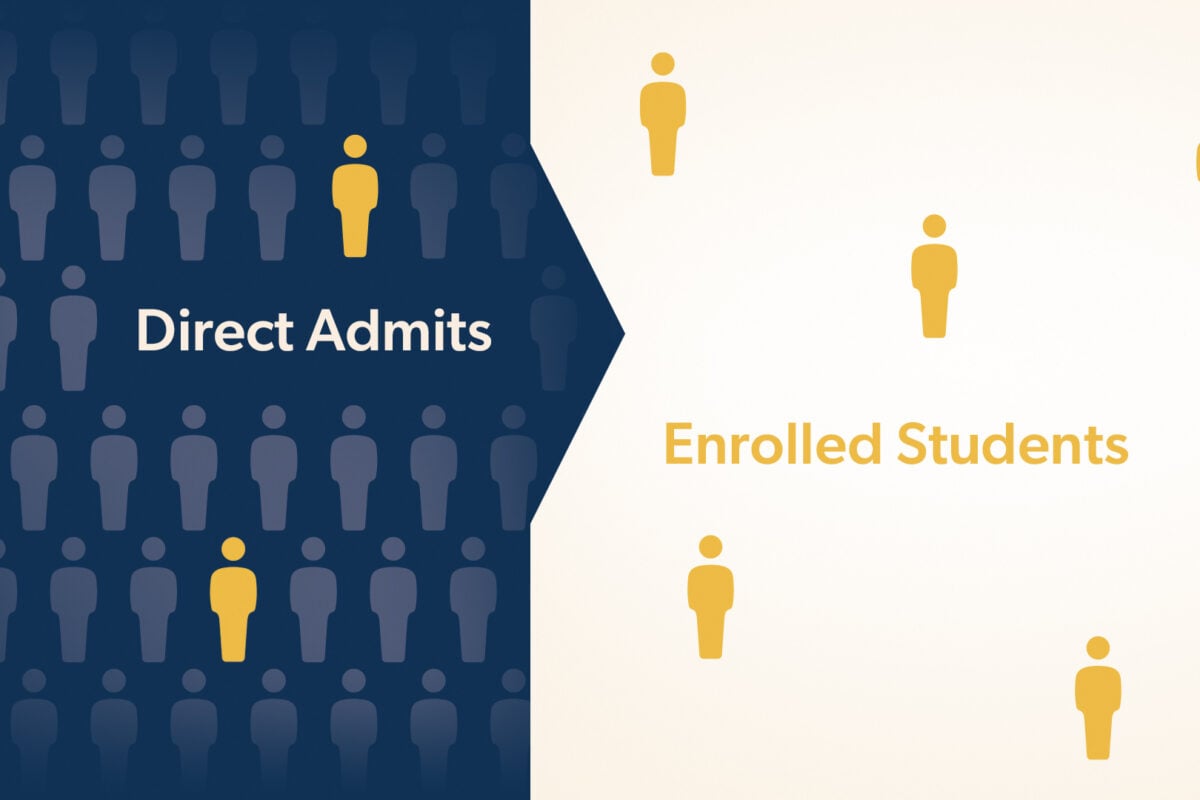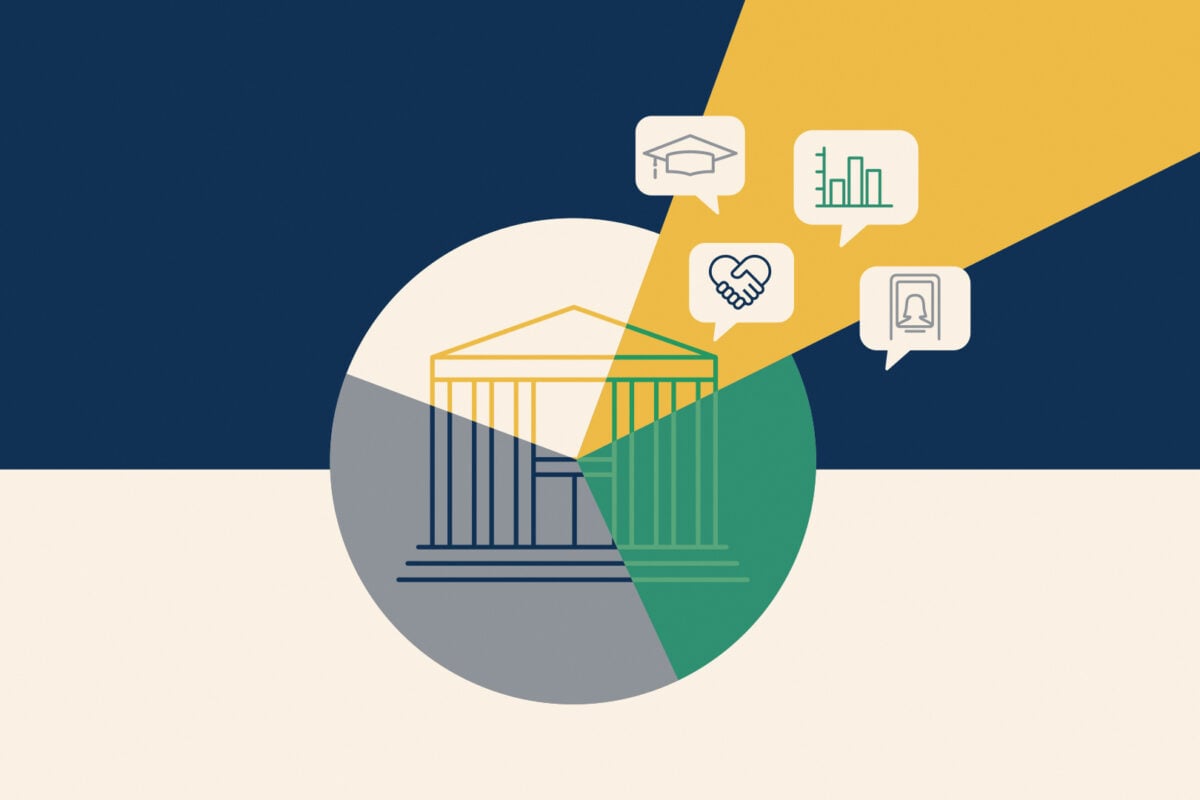Just as the higher education enrollment marketing landscape has evolved so has the yield process. But what remains key in converting is building relationships with prospective students. This Innovating Enrollment Success episode explores proven strategies for improving yield in today’s higher education marketplace.
Show Notes
Paskill experts Dave Black and Dana Evans Amberge talk about how recruiters can make the most impact to improve yield right now.
This episode addresses:
- adapting to changing circumstances, like FAFSA
- understanding students’ choices among enrolling at your institution
- balancing AI and new technologies with the human element of recruiting
- having consistent messaging and delivering on promises to build trust
- understanding the needs and backgrounds of diverse students
- the fundamental skills and competencies needed to be an effective recruiter
- why on-campus professional development for admissions teams works
Learn More About Yield Boot Camp
Transcript
Cathy Donovan [00:00:00]
Hello, and welcome to the Innovating Enrollment Success podcast, where we dive into all the ways to deliver enrollment success to colleges and universities today. Innovating has always been part of enrollment marketing because teens and trends go hand in hand, and your marketing must evolve to engage them.
While teens today are more distracted than ever and spend at least eight hours a day on a screen, they still need to form healthy relationships to build trust and make big decisions, like where to attend college and if they’ll attend college. Today we’re talking about a big issue in higher education enrollment marketing, yield, converting accepted students into enrolled students.
The experts we’ll be talking with today have supported hundreds of colleges with improving yield and trained thousands of admissions recruiters with the number one way to do that: building better relationships. I’m Cathy Donovan, Agency Marketing Director at Paskill, a higher education enrollment marketing firm that has been helping to shape the future of institutions since 1986.
Today I’m joined by the lead consultants of Paskill Academy, which focuses on providing the skills and resources folks on the front lines of enrollment need most. As Vice President of Market Research and Consulting Dave Black has championed higher education enrollment for his entire professional career.
In those decades of experience, Dave and his work have received high praise from various partner institutions, acknowledging his untiring commitment to success. He’s a graduate of St. Bonaventure University and Western New England University.
Dana Evans Amberge is a Senior Consultant of Enrollment and Marketing at Paskill where the team has delivered hundreds of workshops and supported hundreds of higher ed partners with enrollment solutions. She’s a former dean of admissions and financial aid at Salem College and also worked in the admissions office at her alma mater, Furman University. Welcome Dave and Dana. Let’s get started.
Higher education is under a time of great transformation. Can you give me a quick overview of how the higher education landscape has evolved in 2024 and what impact it has had on student enrollment and yield? Dana, will you help us get started?
Dana Evans Amberge:
Absolutely. Uh, thanks, Cathy. It’s great to be here. You know, I think if there’s one thing that we know about the higher ed landscape right now is that, you know, there’s never a dull moment.
There’s constant change going on and, you know, currently I think we hear a lot about topics that we’ve all been hearing a lot about might include, you know, the enrollment cliff, Supreme Court decisions, AI, a lot of buzz about direct or guaranteed admissions. But, you know, really, when you think about it, what does all this have to do with yield?
And when we think about yield and we think about the college, uh, search process, it’s, it’s highly competitive. And students have a lot of choices. So, you know, I think this is really going to require colleges and universities to, to have a strategy and have a plan, especially when it comes to yield.
My father used to remind me all the time that, you know, hope is, is not a strategy. So when we think about the landscape and we think about all these changes going on in higher ed, it’s more important than ever that colleges and universities think about their yield strategy, that they build a plan. Um, and they write it down and they really think about how they can really best work with the right students, how they can connect with students and really engage the students to build relationships. That’s what’s going to bring success to their yield.
Cathy Donovan:
Dave, did you want to add to that question at all?
Dave Black:
I couldn’t emphasize enough the one point that Dana made early in that comment, and that is that these students have a lot of choices. And I think that should be a guiding mark for these institutions as they’re working on their plans to improve yield is that these students have a lot of options, and you have to present your best case to them every chance you have.
There’s not an opportunity that you can let slip by. So, if we just keep reminding ourselves about the competitive market and that they have options, I think that will cause a lot of the institutions to circle back around and revisit what are they doing and how are they trying to make themselves distinctive in the marketplace.
Cathy Donovan:
Well, COVID does seem to be gone, but it of course left a lasting impact on higher education enrollment. And now we have the FAFSA mess, you know, what other changes have universities made to help with yield and adapt to the growing needs of prospective students and families? Dave, I’d love to hear your thoughts on that.
Dave Black:
Okay, that’s a good question. You know, there’s always something new on the landscape, but yes COVID and this FASFA mess are in our current memories on all this but I think one of the things about all of this is that we have to keep looking at what we did last year build on it, get better at it and recognize we have to do something different because the marketplace is demanding that.
So what are the different things? Well, number one is right now, we have to extend our communication flows. Our plans for yield are being lengthened where in the past. it was pretty active from, say, February to May for a lot of institutions. Now, we’re going to be digging in on this until into June and July, especially those institutions that have rolling admissions.
So, it’s going to really change how we’re approaching this. We have to lengthen our time frame. Can’t lengthen the intensity or the urgency. That has to be present and right now. But I think we do need to look at how are we going to be building these communications. Working with these students and the families over a period, extended period of weeks and months, I think that’s going to be the biggest change in all of this as we kind of look at what’s coming down the pipe right now.
Cathy Donovan:
Dana, how about you? Did you want to add to the changes that are out there right now?
Dana Evans Amberge:
Dave touched on a really good point, the emphasis on students and families, and I think making sure that we bring parents into the yield conversation is, is so important. Um, you know, very few students are going to be making this, this decision all by themselves.
They have an influencer, if not a, if not a parent, but an influencer in their life. And with all the, with all the changes going on right now in the landscape, I think colleges and universities could probably focus a little bit more on those influencers to impact yield as well.
Dave Black:
Okay, I’d like to add one other thing just kind of building off where we’re going with all this.
Cathy Donovan:
Of course.
Dave Black:
It’s not new. This is a reminder that yield is not a one-and-done. Yield is not one accepted student event. It is not one series of emails that just ask for a deposit. It is really a strategy that involves any number of tactics from email to text to events, video, postcards. I mean, it’s an elaborate process.
And when we think of what’s at stake, we have to look at the entire game plan on this. Certainly, put a lot of energy into events and like that. And we’re not gonna change that too much. But I think it’s, uh, really looking at environmentally, what is it that we’re doing to, uh, impact, uh, the decision making of these students and their families.
Cathy Donovan:
Fair points. And while we’re talking about relationship-building skills, and obviously over a long point of time, can we shift gears a little bit and just talk about some emerging technologies like AI and data analytics? Do they have a role in optimizing yield? Just curious about that. Dana, would you get that started for us?
Dana Evans Amberge:
Sure. Absolutely. You know, emerging technologies are definitely a great opportunity for colleges and universities and enrollment teams to use. And, you know, I think a lot of these emerging technologies can really help teams work, work smarter and not harder. And that’s really, I think, a goal that a lot of colleges and universities should focus on because there’s just only so much time in the day.
And so we really are looking at it. How can we impact yield? How can we impact enrollment and be efficient with that? And so, you know, when you look at a lot of the emerging technologies, I mean, you know, we could probably do a whole podcast just on those, um, but you know, there’s a lot out there that, that have a direct impact, um, right, right on yield, um, you know, whether we’re using those to really assist in the application process itself, or whether we’re using predictive modeling or, you know, optimizing media campaigns. There’s absolutely a role, um, for those in yield and we need to look for those to be efficient as much as those can help in the yield process. Um, you know, I guess I would just want to caution teams and colleges and universities to not forget that a lot of that, that yield in my mind really comes back to that human relationship, though it’s the recruiting piece and we can, we need to adapt and, and utilize the technologies to really work faster, work smarter, be more efficient with things. But we don’t want those to replace the human element of this, the recruiting, the relationship-building piece, because I think that can definitely be so impactful in yield and the whole process.
Cathy Donovan:
We’re talking about relationships and that trust that needs to come between a recruiter and a student and their families, but I’m guessing that students have relationships with the brands of their colleges and the universities that they’re considering. So I’m just curious about, um, how brand factors into a student’s decision and, you know, on where they apply and enroll. Dave, what, what are your thoughts on that?
Dave Black:
Yeah, there’s no doubt these students have done their homework, uh, on this and, uh, and, and the parents too. Let’s not just think this is a student endeavor. Um, so brand is, is just so vital to how students begin to see us. So I think it comes back to really a couple things. Number one is we can’t lapse in our messaging and our branding. We have to look at every opportunity as maybe the last opportunity to share with that student. We don’t know when they’re going to disengage from us, number one.
Number two is I think we’ve got to look at how do we not just do the visual identity part of the brand, but the messaging, the DNA, the core themes, you know, all those buzzwords out there. And figure out how do we work them into real life situations? How do they show up in the video? How do we really demonstrate our brand at an event on campus?
An accepted student day, what are the pitch points that we’re making out the reinforcing brand versus talking about got to get a key for your res hall and finish that application for FASFA I mean, those are all important things but they’re not decision-making factors in all this, and the brand is part of that decision making process.
Cathy Donovan:
How about you, Dana? Did you want to contribute to that conversation on brand?
Dana Evans Amberge:
When I think about brand, I think about it being a lot about that promise that we’re making and the student experience promise, and I think as Dave was mentioning, you know, really bringing that to life for students is what’s so important.
And making these connections, you know, like, whether it be again, making sure that our video is on point, making sure that that campus visit really explores the brand and students can really experience something. It’s really more about that talking with and, and not talking at and bringing students into, into the experience more, um, that I think really brings the brand to life and, and that’s going to make a difference in yield.
Dave Black:
And oddly, I think I know that when we think of brand, we think of the institution, but when you think of relationships, the relationships all about the student. And once you know the student, then you can link them back to your brand. And that’s the subtlety between the relationships and enrollment.
Marketing is the relationship is all about the student. Our enrollment marketing is about the college and the collegiate experience that they offer collegiate, academic, spiritual, athletic, social, et cetera.
Cathy Donovan:
Fair enough. So, it does seem like that students are going to set the tone for what they want and who they are and where they feel like they belong. You know, I’m thinking about recruiting diverse students and that will continue to be in demand. You know, how do you guide recruiters to communicate with students and families from traditionally marginalized backgrounds that, you know, they have a place at your institution and they’re going to feel welcomed and part of the community? Dave, did you want to take that one for us?
Dave Black:
Yeah. You know, oddly, I hadn’t thought about this till you were just, um, stating that the importance of the relationship with these underrepresented populations and how important the relationship is not just with the student, but with the entire family unit. Whatever that represents. Yes, brand is going to be important. I’m not going to back down from that, but a lot of these families are really looking for something that kind of addresses who they are, where they want to go, what their current situation is, and where they’d like to go. And yeah, brand is important, but what they want to see is can the brand carry me to that next level? Can it provide me that opportunity that I may not see? Uh right now, so I think a lot of that work with these uh populations is really about talking with them versus just promoting who you are. Again, I don’t want to undermine the importance of brand, but when you start talking to these different populations, they’ve already filtered you out.
You’re in the conversation because they like something about your brand. And now what you’ve got to do is kind of bring it home, so to speak, in the sense of making it real to them and their families and their situation, make it attainable to them. Not easy work, um, you know, because, uh, for some of our institutions to be rather bold on this not all of our staff can really directly experience what these families are going through. So we have to really be conscious about how are we approaching this, not making biased assumptions about my experience going through the selection process and how that might be overlaid onto what we think these other populations are going through in their search process. There’s no one single path and that’s all we know.
Cathy Donovan:
It sounds like relationship skills, that’s not, that’s not something that’s easily achieved through just marketing alone. You need the people to be able to really personify, um, those kinds of experiences. Dana, did you want to add to that topic about recruiting diverse students?
Dana Evans Amberge:
Yeah, I’ll just, I’ll just kind of piggyback on what Dave said in the sense that I think really, you know, working with diverse populations also means working with diverse families. And again, can’t, can’t reiterate enough I think the importance of communicating with, talking with parents and families.
Again, it’s that, it’s a family decision and it’s, you know, family dynamics come into play and that’s also important. And so really addressing those, um, is key.
Cathy Donovan:
Well, we’ve talked a lot about the changes in higher ed. Let’s talk a little bit now about just the fundamental skills and competencies that you think admissions counselors need to really convert students today. Dana, will you take that for us?
Dana Evans Amberge:
Absolutely. So, you know, when I think about what I would consider a really good admissions counselor, um, I’d say one of the qualities that I always look for and that comes to mind is that of, of curiosity. If an admissions counselor is curious, if they fundamentally, you know, they want to learn more about students, they want to connect with students, they want to learn more about the family or the, the parent, and to do that they have to ask questions, um, and they really have to take, take what they’re learning from students and families as they ask those questions and then connect that back, uh, to the institution.
I really believe that the, the college buy, so to speak, is, is an emotional buy. And the way we begin to make those connections, you know, that curiosity, learning about students, figuring out what they want and what they need in the process, and then, and then making the connections. And I think sometimes what I, I kind of see as a, as a mistake, so to speak, with admissions counselors is that sometimes I feel like, you know, their comfort zone is, to really focus on what they know about the college and, you know, they’ve got this list of things they want to share, which is great.
And, you know, 99. 9 percent of the time they’re so excited to talk about the college and they want to share these things. But again, it’s, it’s about what’s going to be relevant to the student. And that’s kind of where that curiosity comes in is. Is learning what the student wants and needs in this process more, and then making those, those connections.
Cathy Donovan:
Great. Dave, how about you? What, what do you think are those fundamental skills and competencies that admissions recruiters need right now?
Dave Black:
I think the ability to take what they’ve learned about the student and the family and relate it back to the institution. So they spend all this time and I love Dana’s thought on being curious. They take this time to learn about the student. How can they now really connect that back to the institution? Sometimes we kind of forget that there is a bridge, a link, you know, what’s in it for the student. We talk about the features and, and the outcomes at particular institutions, but how can you link who that student is with the features and the outcomes that you’ve been talking about?
What are the benefits to the student? The things that you want to talk about your institution. Why do they care? What’s the link back to the student on that? So really just taking advantage of all the things that you’re learning, uh, from the student and the family and, and applying it to how they would be successful at your college.
Cathy Donovan:
Well, there’s obviously a lot of options for professional development out there. I’d like to hear from you, you know, why Paskill Academy’s professional development, why that investment is so worthwhile for an institution looking to improve its yield. Dave, will you get us started?
Dave Black:
Yeah, uh, Cathy, I’m going to step back and set this conversation up a little bit differently. I cannot emphasize enough the importance of AI data analytics in the future of yield and enrollment overall. It is happening at breakneck speed. The idea of branding, uh, whether it be through video, conversations, whatever is the particular channel, it’s going to get more and more important. But for many of the institutions that are going to be listening to this podcast, this time and date, those are future plans.
I don’t know how we can realistically bring AI if you haven’t already been working on it for weeks and months into your yield right now, and I think that’s where. professional development for your staff we can do that in the here and now. We can impact Fall ‘24 right now by giving your team better preparation for these conversations.
That every opportunity they’ve got with students and parents, they don’t let that slip past. Again, all those other things are important, but if you haven’t already got your video plans in process, you’re not going to get that built between now and, uh, May 1st, it’s just too much to happen. Where your professional development, you can start working with your teams to enhance how they are working with students.
I think our programs really come at this from a here and now perspective. I think we are able to adopt some very fundamentals about academic sales. And in helping students through the process, uh, we can bring that into the teams because of all the experience we’ve got. We’ve done this literally, you said in the beginning of hundreds, I’m thinking like, oh my gosh, really?
Yes. Uh, all these different campuses, large, small, public, private, community colleges, selective institutions, uh, those that are really dependent on every single seat being filled type of institution and the work that we’ve done in, in digital and, and web work, bringing all of these conversations into the workshops and helping the staff really kind of see how can we apply them to their situation with their student audiences right now.
I think that puts us in a very unique spot. So, yeah, we’re good at it. But keeping in mind with all the other things that are going on right now, we can have a huge impact by preparing your staff to be more effective and maximizing their time with students.
Dana Evans Amberge:
And Dave, I think I’ll just, you know, add with that. I think one of the things that the profession, when we talk about professional development and, you know, we think about yield in particular, it is a lot about working directly with the admissions recruiters, but our yield workshops when we go to campus also really bring in some other offices on campus that play that key role in yield, whether that be financial aid or marketing or, you know, I was just on a campus recently where, you know, we had housing and student orientation because all of these different teams touch students and, and families in the yield process and they all have a role. A very important role that can really make a difference in the end result.
Cathy Donovan:
It sounds like these admissions recruiters, I think the job probably has always been really difficult, but it must be really hard right now. It sounds like they probably could use, you know, not just go to a conference and your team goes to different sessions and you come back. You know, this isn’t that this sounds like it’s, you know, almost, um, like a group confrontation of what’s really going on with your team and how to up those skills. It doesn’t sound like a one-and-done scenario where you come in and you learn something and you go home. It sounds like there’s a lot of thinking that has to happen and team bonding. It’s hard to put in a brochure, Dave, so could you talk a little bit about like, If you’re an admissions director and you could choose between taking your team to Florida, why should they say, you know what, let’s bring Dave or Dana on campus, and let’s see what they could do for our team in two days.
Dave Black:
There’s a couple things that come to mind when we talk about why have us on campus. And I think one of the points is what Dana was just mentioning is by being on campus and working in your environment, in your situation, understanding the culture of your institution. Having all these other campus partners, the ability to have them in these sessions, while they may not be doing everything, it takes a team to enroll a student.
And I think this on campus workshop just enables the institution’s leadership to make sure everybody’s on board and headed in the same direction on this. That’s such a key point to all of this, that shared knowledge, that shared investment in the outcome is going to be so helpful to the student.
Look, if they, they all want to go down to Florida and do a workshop in Florida, I’m game right now. I mean, it is middle of February, so.
Cathy Donovan:
True, true. Well, thank you so much for joining me today. It’s always a pleasure to talk with you both.
Dana Evans Amberge:
Thanks, Cathy.
Cathy Donovan:
Converting students from admitted to enrolled isn’t easy, but there are strategies that can make a real impact right away. Aligning your team with the skills they need improves enrollment and morale. For more about Dave and Dana, see our show notes or find them on social. Or if you’d like, reach out to us at Paskill. Dana and Dave can chat with you about what’s possible for your institution.

